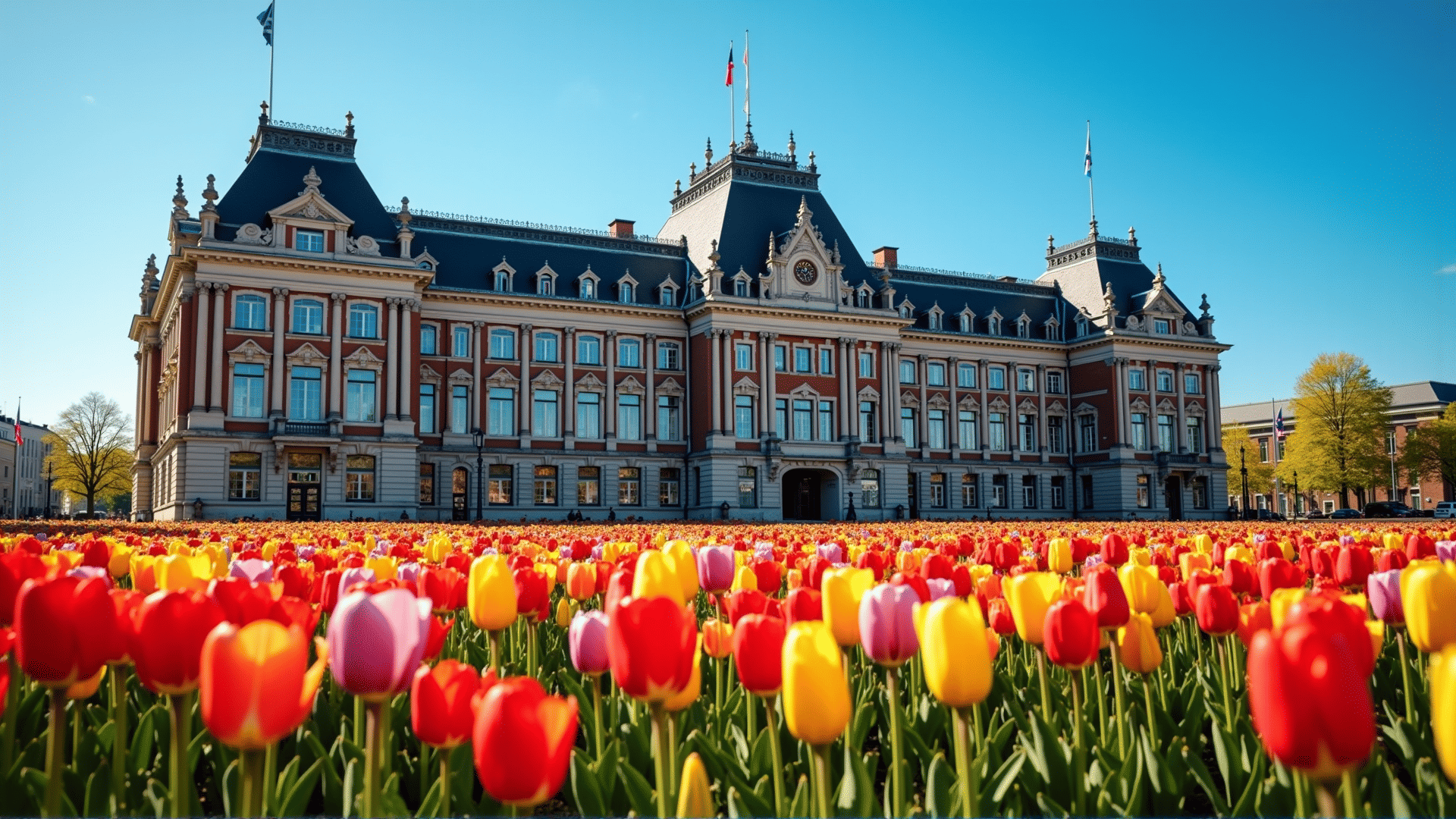The period between 1951 and 1989 was a transformative era for Dutch architecture, marked by significant innovation and a redefinition of public buildings. Dutch government buildings, in particular, stand out as a symbol of the nation's architectural progress and the evolving political and cultural landscape.
This period in the Netherlands was characterized by post-war reconstruction, economic growth, and social change. These factors greatly influenced the design of government buildings, which not only served a practical purpose but also projected an image of a modern and forward-thinking state.
At the dawn of this era, Dutch architecture was still recovering from the devastation of World War II. The architectural movement that emerged, known as Nieuwe Bouwen, or "New Building," reflected a shift towards functionalism. This approach emphasized clean lines, simplicity, and the use of modern materials like concrete and glass. The philosophy behind Nieuwe Bouwen was to create structures that were efficient, sustainable, and adaptable, ideals that resonated with a nation eager to rebuild.
One of the most iconic examples from this period is the Beatrixkwartier in The Hague. Developed in the 1960s, it became a hub for government offices. The buildings in this area are a testament to the modernist ideals of the time, combining functionality with an emphasis on light and open spaces. The use of large glass facades was not just an aesthetic choice but also a statement of transparency and openness in governance.
As the decades progressed, the architectural narrative evolved. By the 1980s, a new form of expressionism began to take hold, experimenting with bold forms and vibrant colors. This shift was reflective of a broader cultural change as the Netherlands became more multicultural and globally connected. Buildings like the City Hall and Central Library in The Hague, designed by American architect Richard Meier and completed in 1986, exemplify this period. Their sleek white exteriors and innovative use of space offered a new interpretation of what government architecture could be, blending order with creativity.
Throughout these years, the designs of Dutch government buildings were deeply intertwined with the socio-political context. The Cold War era, for example, led to structures that were not only aesthetically pleasing but also designed with security in mind. This dual function of beauty and purpose resulted in buildings that were fortified yet welcoming, secure yet publicly accessible.
The legacy of Dutch government buildings constructed between 1951 and 1989 is profound. They are not just physical structures but also cultural artifacts that narrate the story of a nation in transition. These buildings harmonize past influences with contemporary demands, seamlessly integrating functionality with a distinct aesthetic.
Moreover, the architectural innovations from this period continue to influence modern construction in the Netherlands, inspiring a balance between tradition and modernity. As the Netherlands looks towards a future of sustainable architecture, the principles established during these pivotal decades provide a foundation for progressive yet respectful development.
In conclusion, the government buildings constructed in the Netherlands from 1951 to 1989 offer more than just architectural interest—they represent the dynamic intersection of history, politics, and design. As reflections of their time, they illustrate the commitment of the Dutch to create environments that are not only efficient and sustainable but also inspiring and enduring. These iconic structures remain a testament to the nation's ability to adapt and innovate, setting a benchmark for the future of architectural design.
